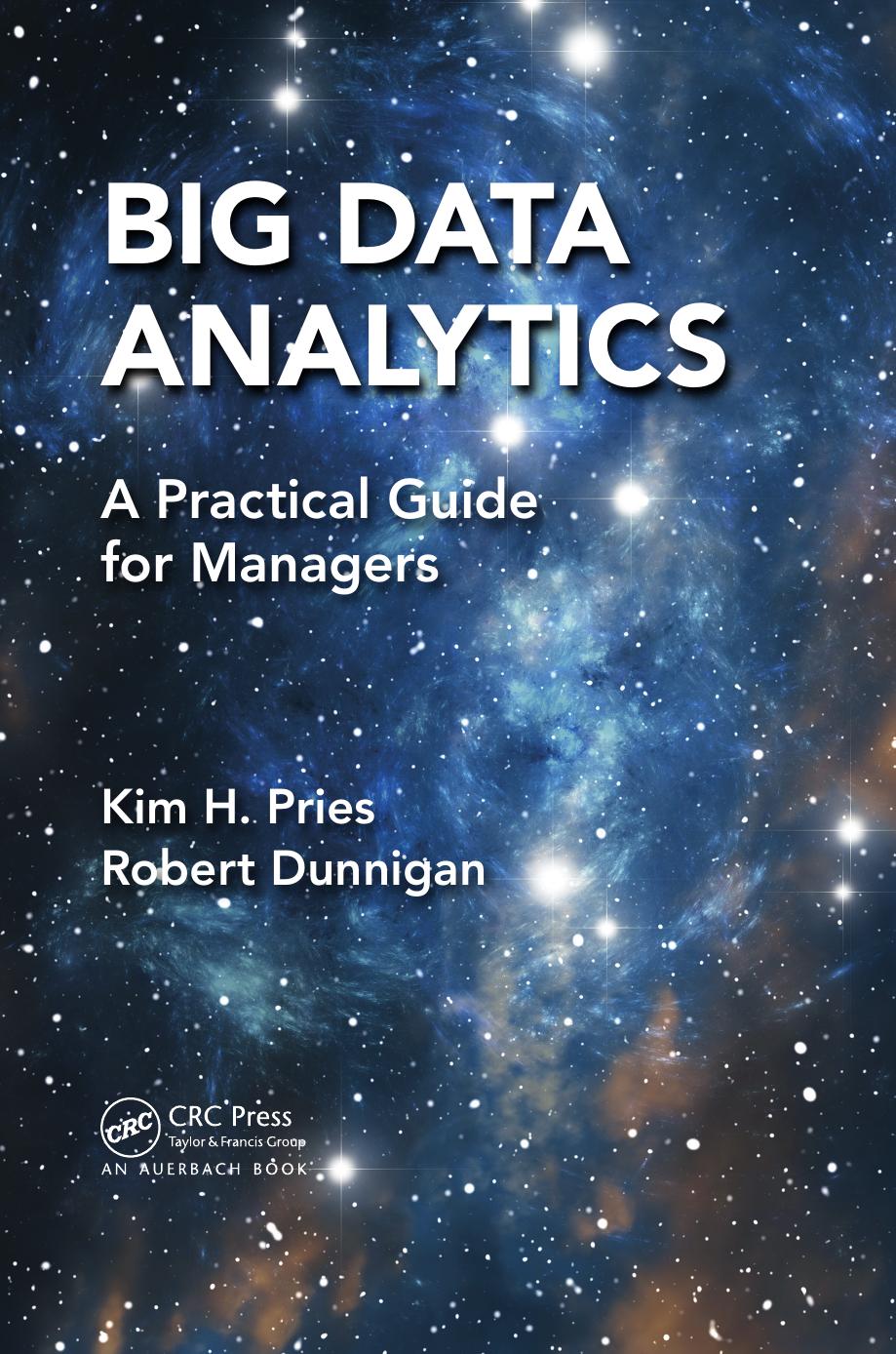Big Data Analytics: A Practical Guide for Managers by Kim H. Pries

Author:Kim H. Pries
Language: rus
Format: azw3, pdf
Publisher: Auerbach Publications
Published: 2015-02-11T22:00:00+00:00
P B
( )
260 ⢠Big Data Analytics
It looks fearsome, but it is not. Bayesâs theorem lets us calculate a pos-
terior probability using prior informationâwhich we are more likely to
have. Put another way, using imperfect information that we do have, we
can focus on a more accurate probability that we cannot discern directly.
In the way that Bayesâs theorem is usually discussed, repeated applica-
tions of Bayesâs theorem should drive the posterior distribution to more
closely resemble the ârealâ distribution. More fundamentally, Bayesâs the-
orem does with probabilities what golf clubs do with golf balls. It moves
the ball closer to the hole (well, one of us is a golfer who is not always so good at moving the ball in the right direction). With each stroke, the golf ball should be in a better location than it was previously. With Bayesâs
theorem, each application to the same problem to be solved should bring
the calculated probability more in line with the underlying reality.
Bayesâs theorem is often unfairly treated as merely a way of creating a
quantitative façade over subjective speculation. A false dichotomy exists
between frequentist statistics and Bayesian analytics. Frequentist statis-
tics are effectively those we use most commonly with our firmsâ data sets;
for example, we can roll up the data set and see 17% of our customers
spent on average more than $200 per month in our store last year and
our Cleveland office has the best employee retention rate. The hypothesis
testing we have discussed is a frequentist technique. Bayesian analysis is
something different, and as we will see using one of John Ioannidisâ exam-
ples, it can shed much light on how strong is the conclusion we can draw
from our hypothesis test.
Dr. Ioannidis posits a thought experiment using research involving gene
polymorphisms related to schizophrenia. He argues that out of 100,000
polymorphisms, it is realistic to expect we can tie 10 of those to risk of
this disease. That means that there is a 10/100,000, or 1/10,000, chance
that any one of these polymorphisms indicates heightened susceptibility.
Our study has 60% specificity (also known as detection rate or statistical
power), or in other words it detects 60% of cases. This also means that
there is a 40% (1 â 60% or 100% â 60%) Type II error rate where the test
fails to reject the null hypothesis when it should be rejected. Our significance level is .05. As we have discussed, this means that approximately 5%
of the time we can expect the test to incorrectly result in a rejection of the null hypothesis.
Let us plug in some numbers to calculate the probability that our rejected
null hypothesis was correctly rejected. First, we calculate the numerator
or the part of the equation above the line. This value is the probability that Statistics ⢠261
any given polymorphism is indicative of a heightened schizophrenia risk
multiplied by the statistical power, or detection rate. When we calculate
we get 0.01% multiplied by 60%, or 0.006%.
Download
Big Data Analytics: A Practical Guide for Managers by Kim H. Pries.pdf
This site does not store any files on its server. We only index and link to content provided by other sites. Please contact the content providers to delete copyright contents if any and email us, we'll remove relevant links or contents immediately.
Time Management Made Easy: How to Cultivate New Habits, Improve Productivity and Get Things Done by Joshua Strachan(2369)
The 7 Habits of Highly Effective People by Stephen R. Covey & Sean Covey(2110)
The Concise Laws of Human Nature by Robert Greene(1720)
Doesn't Hurt to Ask by Trey Gowdy(1558)
Primal Leadership by Daniel Goleman(1133)
Hook Point: How to Stand Out in a 3-Second World by Brendan Kane(1099)
HBR's 10 Must Reads 2021 by unknow(1045)
Don't Sweat the Small Stuff...and It's All Small Stuff by Richard Carlson(1018)
Amazon Unbound by Brad Stone(980)
100 Things Successful People Do by Nigel Cumberland(965)
HBR's 10 Must Reads 2021 by Harvard Business Review(956)
The Job Closer by Steve Dalton(939)
Master of One by Jordan Raynor(935)
Lives of the Stoics by Ryan Holiday & Stephen Hanselman(900)
Declutter Your Mind: A step by step guide to learn to control your thoughts, stop worrying, relieve anxiety and eliminate panic attacks and negative thinking by Mia Chandler(877)
The Power of 100! by Shaun King(851)
Conflicted by Ian Leslie(800)
Coders at Work: Reflections on the craft of programming by Peter Seibel(789)
The Book of Hope by Jane Goodall(745)
